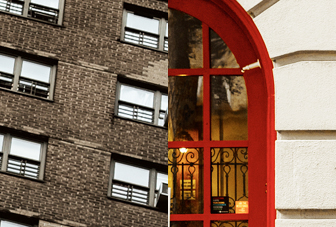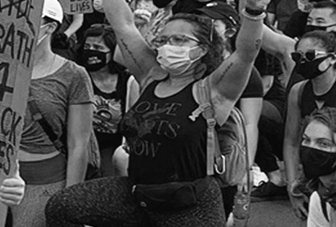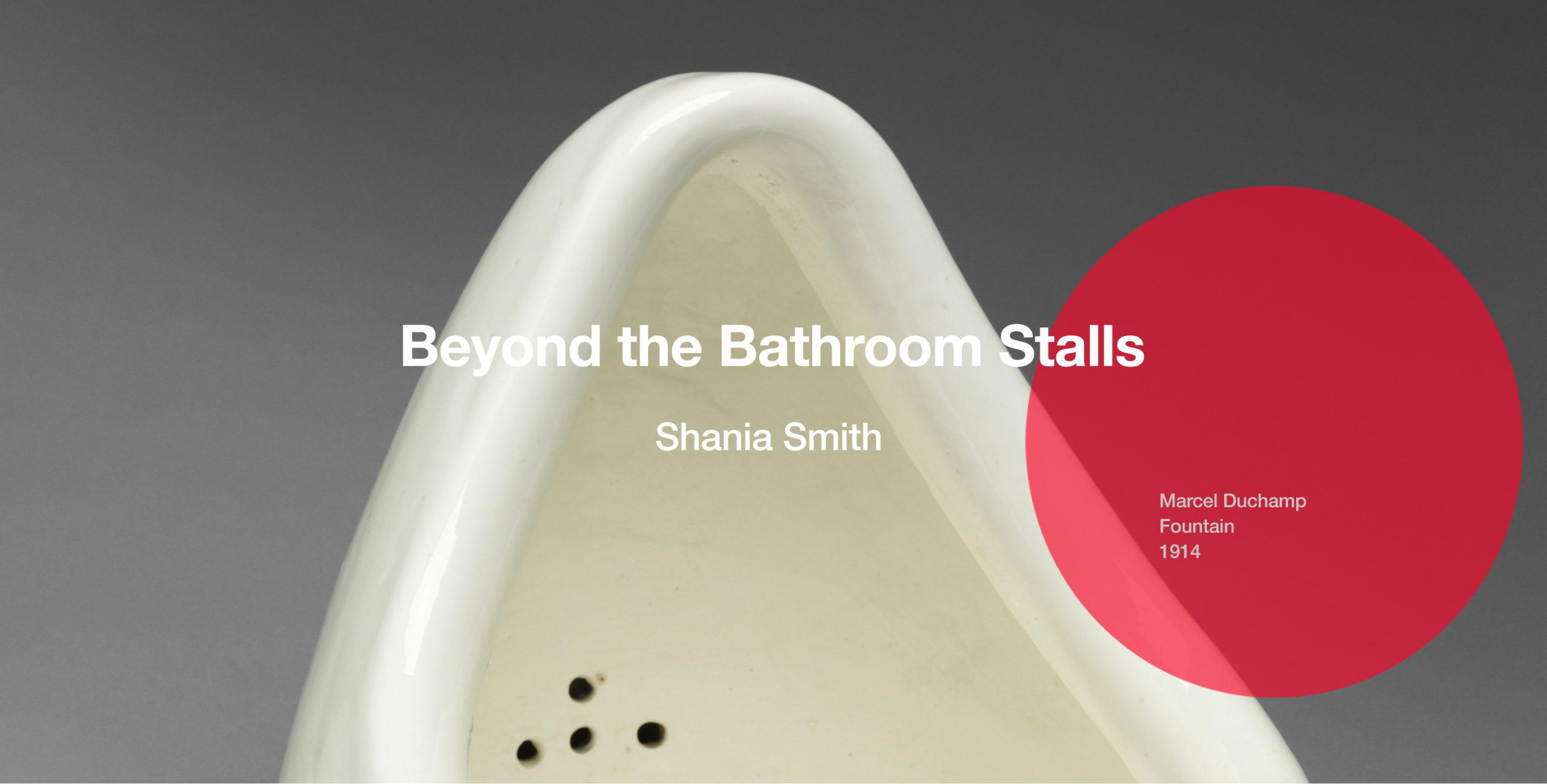
In 2014, after years of battling depressive and suicidal thoughts, 15-year old Gavin Grimm was diagnosed with a severe case of gender dysphoria. Soon after this diagnosis, Grimm began his gender transition and announced himself male to those around him. Upon informing the authorities at his school, Grimm was initially allowed to use the boys’ bathroom. Two months later, however, he was met with ire from his classmates’ parents, who impelled the school district to implement a policy that barred students from accessing spaces that weren’tintended for their biological gender. After the passage of the ban, Grimm, a transgender boy, was forced to use his school’s girls’ restrooms and locker rooms, where he’d face great ridicule fromhis peers. For months following, Grimm grappled with feeling incredibly stigmatized and isolated to the point that his suicidal thoughts returned. He even developed urinary tract infections as a result of him trying to avoid using his school’s bathrooms (Ennis Dawn inForbes). Unable to bear this reality any longer, Grimm bravely decided to sue his school forgender discrimination. Only after a grueling three years of convoluted court proceedings andcontinued emotional torment would Grimm’s case reach a final ruling. Coupling the statutes in the 14th Amendment and Title IX with compelling testimony from Grimm on the physical and psychological harm he endured, the judge for the Eastern District of Virginia established that the school’s ban violated Grimm’s legal rights to be protected under the law from discrimination. Accordingly, the school’s ban was struck down.
Many may view Grimm’s story as a success story for all transgender youth in thiscountry. However, the Eastern District of Virginia is just one district out of 435. Across the nation, transgender students with similar cases continue to face incredible pushback from their communities – and this pushback has only gotten stronger due to recent policy changes. Since his election to office, President Trump has revoked former President Obama’s order that required public schools to allow transgender students to use the bathrooms that aligned with their gender identity. Now, individual school districts are responsible for deciding which bathrooms transgender students can use. In states like California, Illinois, Idaho, Maine, Nevada, and Missouri, school districts have implemented policies denying transgender students’ access to thebathrooms of their choice (Katie Rogers in The New York Times). Such policies have left transgender students alone to combat persistent harassment from their peers. Revealed in a study by The Journal of the American Medical Association, 24% of transgender students reported being threatened or injured by a weapon at school, and 31% reported experiencing sexual violence (Zaza et al., 2019). Additionally, the report highlighted that the psychological well-beings of transgender students suffer tremendously on account of this harassment. In effort to escape their burdensome reality, many transgender students turn to drugs, self-harm or even suicide (Johns et al., 2019). Last year alone 35% of transgender youth attempted suicide – a rate five times that of their cis-gendered counterparts (Zaza et al., 2016). These statistics clearly elucidate the detrimental effects of denying transgender students bathroom accommodations of their choosing. And yes, they are meant to be alarming.
Yet, in spite of such numbers, there still exists considerable pushback against allowing transgender students access to the bathroom that matches their gender identity. Amongst the many arguments, the most compelling are those from religious segments of society. Many religious communities have values that conflict with those of the transgender community; for, in many faiths, the transgender community represents the corruption of the natural order of God or societal deviation from fundamental human ethics. Although there is great diversity in thought inthis community about this issue, the Christian community is usually placed under fire for espousing such beliefs. To Christian fundamentalists, God is deemed the sole Almighty creator whose creations reflect the intentional nature of God’s immense power; by this virtue, the act of changing one’s gender is viewed as an affront to the intentionality and will God puts into his creations (Genesis 2:2-24, Isaiah 43:7). It is therefore argued by Christian fundamentalist communities that allowing the government to mandate accommodations for the transgender community encourages the societal normalization of this affront on God – in effect forcing their Christian communities to compromise their religious beliefs. In tangent with this is the concern of exposing their children to such unbiblical norms in common places – especially in educational environments where children develop moral principles, personal values and standards. And here lies the complexity enwrapped in this issue. To certain segments of the Christian fundamentalists community, granting transgender students access to bathrooms that match their newly assumed gender identity not only represents a serious threat to their religious identities, but also their personal liberties in raising their children with their religious values. At the root of these concerns is the great fear of not knowing how far these accommodations policies will go inencroaching on their religious freedoms. As expressed pointedly by former Arkansas governorand then-presidential candidate Mike Huckabee, these policies make Christian fundamentalists feel like society is “...moving rapidly towards the criminalization of Christianity.”
Certainly, looking at this issue from these two perspectives unearths a very difficult truth about this matter: there is no easy fix. That is, there is no way to holistically accommodate the diverse wants and needs of everyone on both sides of the argument. However, I will say this. While the concerns raised by religious groups are understandable on many fronts, so too is the pain endured by many transgender students undeniable. The unfortunate reality is that enforcing policies that repress the rights of students in the transgender community subjects them to tremendous psychological torment and hostility. And in many cases, this harassment is so traumatizing that many lose their purpose of living and turn to suicide to escape such disheartening discomfort from the ridicule and terrorism they face from society. The immensity of this discomfort ought not to be ignored, because to ignore it is to deny transgender students of their humanity, of their basic rights as human beings, and of the value of their lives. Ultimately, as human beings, transgender students deserve equal protection under the law, as well as respectand empathy from their communities on their struggles. It is my hope that through this slight glimpse into the debate on the transgender student bathroom access, I’ve demonstrated that this debate is more than a debate on who gets to pee where. In truth, it is a complicated debate with dire consequences to the well-being of our society’s youth. And if we are to call ourselves a society that cares about the well-being of our youth, it behooves us to treat it as such.
Works Cited:
Ennis, Dawn. “Transgender Man Gavin Grimm Wins Court Fight He Started As A Boy.”Forbes, Forbes Magazine, 10 Aug. 2019,www.forbes.com/sites/dawnstaceyennis/2019/08/10/transgender-man-gavin-grimm-wins-court-fight-he-started-as-a-boy/#4b1430de3a1e.
Johns M.M., Lowry R., Andrzejewski J., et al. (2019). Transgender identity and experiences ofviolence victimization, substance use, suicide risk, and sexual risk behaviors among highschool students — 19 states and large urban school districts, 2017. MMWR Morb MortalWkly. 68, 67–71. DOI: http://dx.doi.org/10.15585/mmwr.mm6803a3
Posner, Sarah. “How a Local Religious-Right Faction Launched Anti-Trans Bathroom Debate.”Rolling Stone, Rolling Stone, 25 June 2018,www.rollingstone.com/politics/politics-news/anti-trans-bathroom-debate-how-a-local-religious-right-faction-launched-a-national-movement-203248/.
Rogers, Katie. “Transgender Students and 'Bathroom Laws' in South Dakota and Beyond.” TheNew York Times, The New York Times, 25 Feb. 2016,www.nytimes.com/2016/02/26/us/transgender-students-and-bathroom-laws-in-south-dakota-and-beyond.html?module=inline.
Zaza, S., Kann, L., & Barrios, L. C. (2016). Lesbian, gay, and bisexual adolescents: populationestimate and prevalence of health behaviors. Journal of the American Medical Association,316(22), 2355-2356.
Other Pages

Interview with Dr. Alexandre SkibaProject type

The Return Of The HistoryProject type

A Dead DreamerProject type

NothingProject type
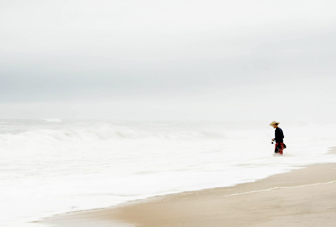
ObsessionProject type

A Person & Their TribeProject type

Education From a DistanceProject type

Coffee, Twitter, and RevolutionProject type

When I Turned SeventeenProject type

A Winter of IsolationProject type

SpeechProject type

Desolation's PerseveranceProject type

CoraProject type

Hospital CookiesProject type

A Fragmentation of WordsProject type

The Stress of Remote LearningProject type

Sweet SixteenProject type

WordsProject type

A Christmas CarrollProject type
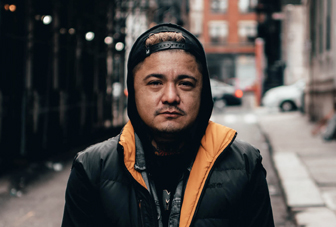
New York City 2020Project type

Qualified Immunity: Broken DownProject type

What Science Tells Us About Gender?Project type

Beyond The Bathroom StallsProject type

1 am thoughts on Trutharticle

Brooklyn, NY During COVID-19Photo Gallery

AboutAbout Page

Submission InformationProject type

